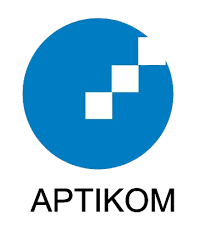A System Usability Scale for Development of YouTube API-based E-Learning Module
DOI:
https://doi.org/10.18196/eist.v4i2.20735Keywords:
E-Learning, Module, Youtube, Youtube APIAbstract
E-learning is formal and non-formal learning carried out using technology, allowing students and teachers to conduct teaching and learning processes using electronic media. By using the e-learning module, YouTube can be included to create material and to ease learning. However, a lot of educational videos on YouTube cover ground already well-covered. Accordingly, the audience cannot skip unnecessary things. Therefore, a YouTube API-based e-learning module was built to help users learn the material effectively. A System Usability Scale (SUS) was employed in this study, allowing easier data collection using a questionnaire. The data analysis acquired a score of 68 (B), signifying the usefulness of the module. The module provided convenience to the users to grasp the material in a brief time.
References
Rodiawati, H. K. (2018). “E-Learning Development Through Interactive Modules Based on the Learning Content Development System” (In Indonesian). Jurnal Tatsqif, 172-185.
Yetti, W. A. (2020). “Development of LMS-Based E-Learning Modules as Interactive Media for Simulation and Digital Communication Lessons” (In Indonesian). INVOTEK: Jurnal Inovasi Vokasional Dan Teknologi, 81-88.Thesis.[online], hal 7. http://eprints.uny.ac.id/id/eprint/2006, [19 Agustus 2021]
Permadi, D. (2018). “Development of E-Learning Modules Based on Project Based Learning (PJBL) in Physics Learning Media Subjects” (In Indonesian). JIFP (Jurnal Ilmu Fisika dan Pembelajarannya), 1-12.
Syamsul Rizal, B. W. (2019). “Making Moodle-Based E-Learning Learning Media in the Introduction to Computer Applications Course” (In Indonesian). Jurnal Ilmiah DIDAKTIKA, 4.
Alathas, H. (2018, October 19). “Kelasux”. Retrieved from medium.com: https://medium.com/kelasux/bagaimana-mengukur-kebergunaan-produk-dengansystem-usability-scale-sus-score-2d6843ca780a
Krisnan. (2021, Maret 22). Meenta.net. Retrieved from Meenta.net: https://meenta.net/metodekuantitatif/#:~:text=Arikunto%20(2006%3A%2012)%20mengemukakan,yang%20diperoleh%2C%20serta%20pemaparan%20hasilnya.
Pujihastuti, I. (2010). “Principles of writing research questionnaires. Journal of Agribusiness and Regional Development” (In Indonesian) 2.1, 44.
Pujihastuti, I. (2010 “Principles of writing research questionnaires. Journal of Agribusiness and Regional Development” (In Indonesian) 2.1, 44.
Pujihastuti, I. (2010). “Principles of writing research questionnaires. Journal of Agribusiness and Regional Development” (In Indonesian) 2.1, 44.
Sugiyono. 2015. “Quantitative Research Methods” (In Indonesian) , Kualitatif Dan Kombinasi Mixed Methods, 308. Bandung: Alfabeta.



